Archives
- 2025-12
- 2025-11
- 2025-10
- 2025-09
- 2025-03
- 2025-02
- 2025-01
- 2024-12
- 2024-11
- 2024-10
- 2024-09
- 2024-08
- 2024-07
- 2024-06
- 2024-05
- 2024-04
- 2024-03
- 2024-02
- 2024-01
- 2023-12
- 2023-11
- 2023-10
- 2023-09
- 2023-08
- 2023-06
- 2023-05
- 2023-04
- 2023-03
- 2023-02
- 2023-01
- 2022-12
- 2022-11
- 2022-10
- 2022-09
- 2022-08
- 2022-07
- 2022-06
- 2022-05
- 2022-04
- 2022-03
- 2022-02
- 2022-01
- 2021-12
- 2021-11
- 2021-10
- 2021-09
- 2021-08
- 2021-07
- 2021-06
- 2021-05
- 2021-04
- 2021-03
- 2021-02
- 2021-01
- 2020-12
- 2020-11
- 2020-10
- 2020-09
- 2020-08
- 2020-07
- 2020-06
- 2020-05
- 2020-04
- 2020-03
- 2020-02
- 2020-01
- 2019-12
- 2019-11
- 2019-10
- 2019-09
- 2019-08
- 2019-07
- 2019-06
- 2019-05
- 2019-04
- 2018-11
- 2018-10
- 2018-07
-
Here we studied GLUT targeted nanomedicines as a new
2022-07-14
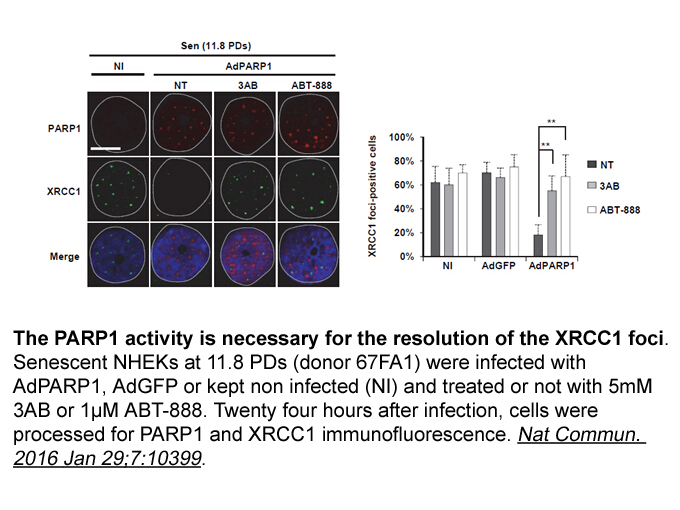
Here, we studied GLUT1-targeted nanomedicines as a new strategy directed to overcome vascular barrier, enhancing delivery and efficacy in solid tumors. These nanomedicines were prepared by controlled installation of glucose on polymeric micelles incorporating the antitumor agent cisplatin, which is
-
br Methods br Results br
2022-07-14
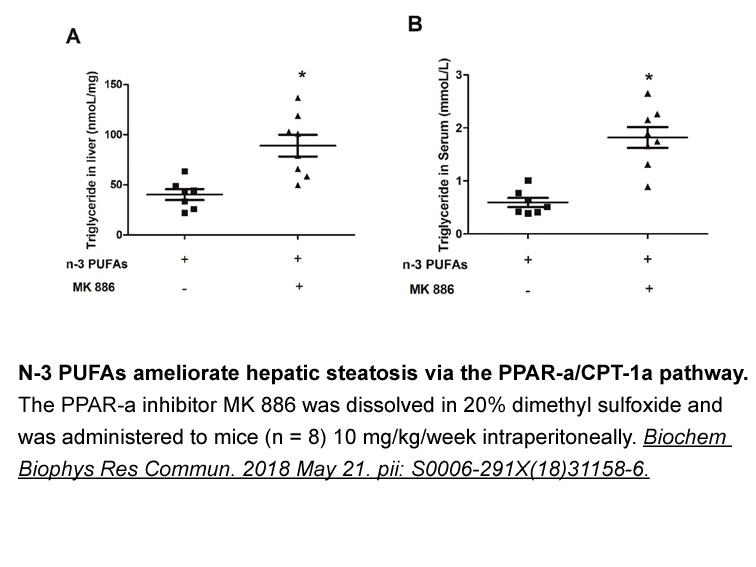
Methods Results Discussion In this study, we investigated temperature effects on Vj-gating properties of two cardiac GJs. In the case of Cx45 GJs, increased temperature from 22 °C to 28 °C (or 32 °C) led to an accelerated Vj-dependent deactivation with little change in the extent of Vj-gati
-
br Introduction Connexins are transmembrane
2022-07-14
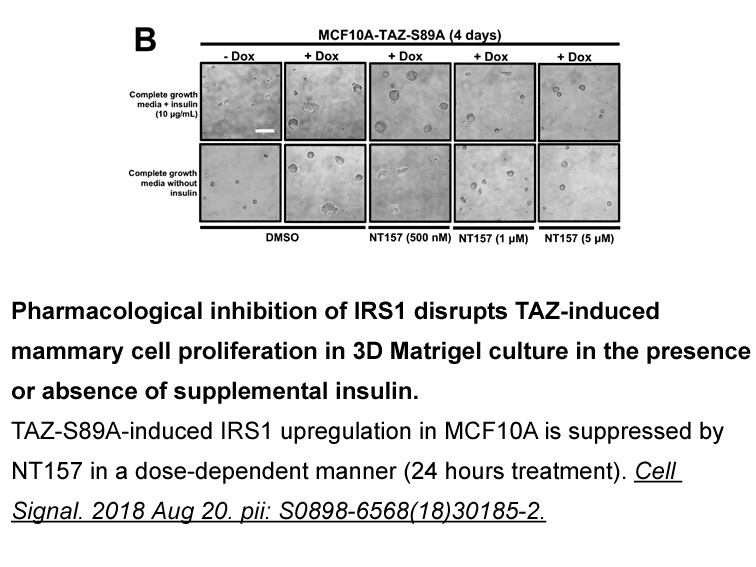
Introduction Connexins are transmembrane proteins that allow the exchange of molecules with the extracellular environment or adjacent Adarotene via channels in the plasma membrane. Intercellular communication and exchange of biologically active molecules, salts, and nutrients to the extracellular
-
Amadacycline GSIs were shown to effectively decrease A level
2022-07-14
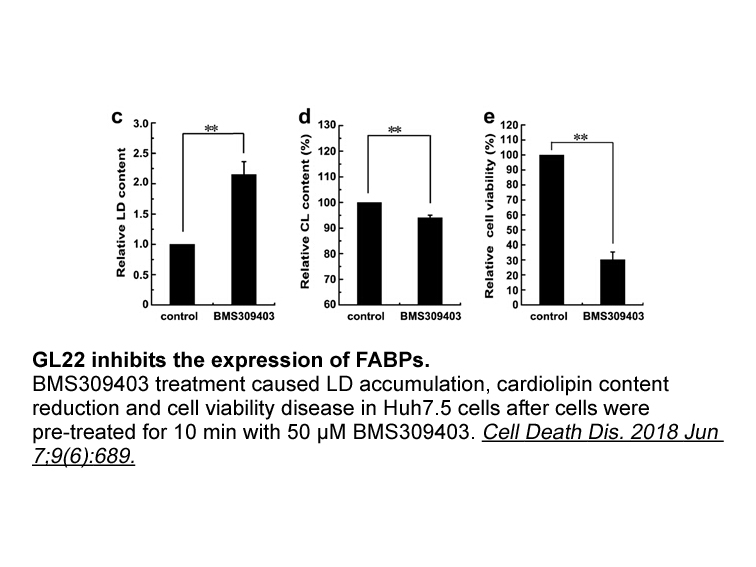
GSIs were shown to effectively decrease Aβ levels at doses close to or higher than their IC50 values in cell culture models. Surprisingly, they also slightly increase Aβ levels at low doses, (significantly below the IC50) also known as “Aβ rise”, due to various mechanisms including inhibition of cel
-
Most of the above mechanisms
2022-07-14
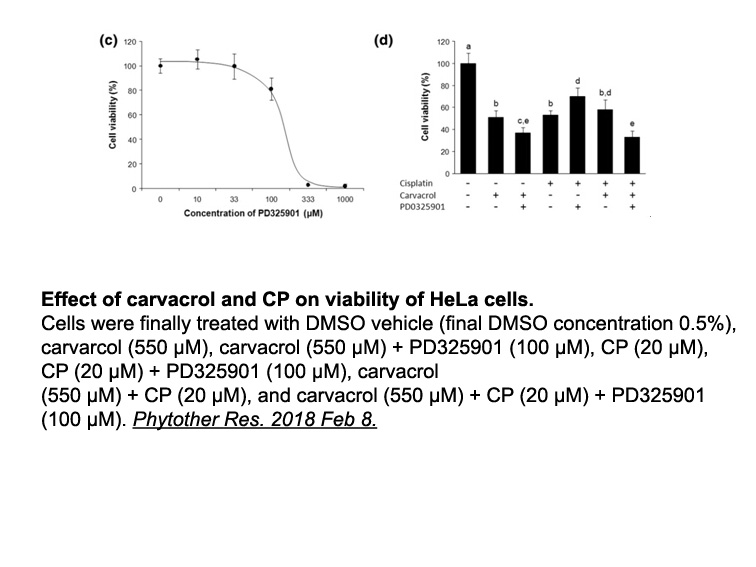
Most of the above mechanisms are implicated in attenuation of myocardial I/R injury. However, the role of GalR2 receptor activation in cardioprotection remains unclear because of the lack of receptor subtype selectivity of peptides G2 and G3. It has been shown that Ala5-galanin (2–11) (G4) has a hig
-
In conclusion our results show that multiple receptor
2022-07-14
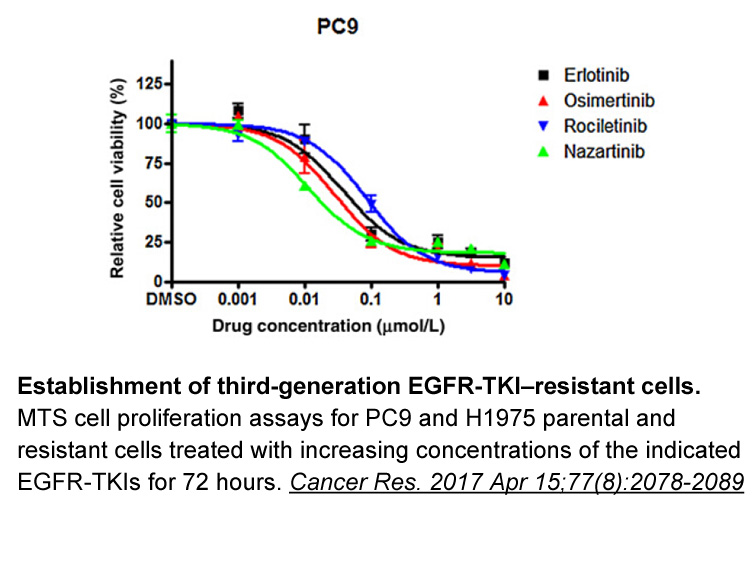
In conclusion, our results show that multiple receptor populations can be expressed when α4, β3 and δ mRNAs are injected into Xenopus oocytes and include β3 homomeric; α4β3; and β3δ receptors. The previously unidentified β3δ can be differentiated pharmacologically from either β3, α4β3 and α4β3δ rece
-
br Results and discussion br Conclusion In conclusion
2022-07-14
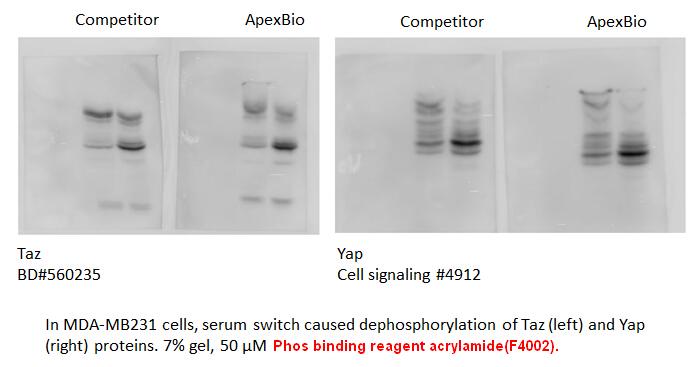
Results and discussion Conclusion In conclusion, twenty-one 4-monocyclic aryl-5-carbamoyl-3-isoxazolols have been synthesized and evaluated for their antagonistic activities against housefly and common cutworm GABARs expressed in Xenopus oocytes. The TEVC results indicated that pkc pathway se
-
Herein exploiting several spectroscopic techniques i
2022-07-14

Herein, exploiting several spectroscopic techniques, i.e. CD, UV and NMR, along with gel electrophoresis, size exclusion chromatography and in silico prediction analysis, the conformational behaviour of R1.2 and R1.3 was studied in Na+- and K+-rich solutions, which mimic the extra- and intracellular
-
br Financial support This work was supported by Fondation
2022-07-14
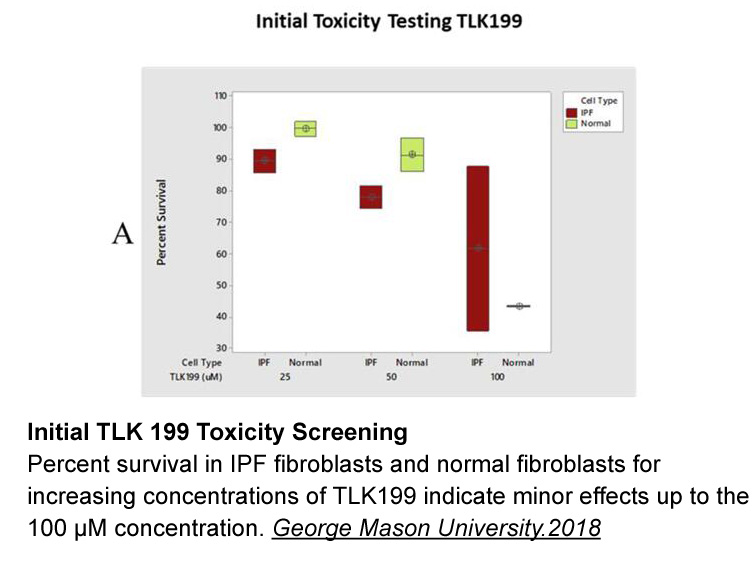
Financial support This work was supported by Fondation pour la Recherche Médicale (Equipe labellisée, DEQ20150331724), Inserm, University of Lille, and Agence Nationale pour la Recherche (ANR-10-LBEX-46 and ANR-10-INBS-08; ProFI project, “Infrastructures Nationales en Biologie et Santé”; “Investi
-
Azithromycin Dihydrate Studies have indicated that formylate
2022-07-14

Studies have indicated that formylated peptides, FPRs, and in particular FPR-1 may be principal conductors in inflammatory processes in sterile-24, 26 and infection-related diseases. FPR-1 and formylated peptides, which are active components of CS, have been involved in smoking-induced lung damage,
-
GPR which is also known
2022-07-14
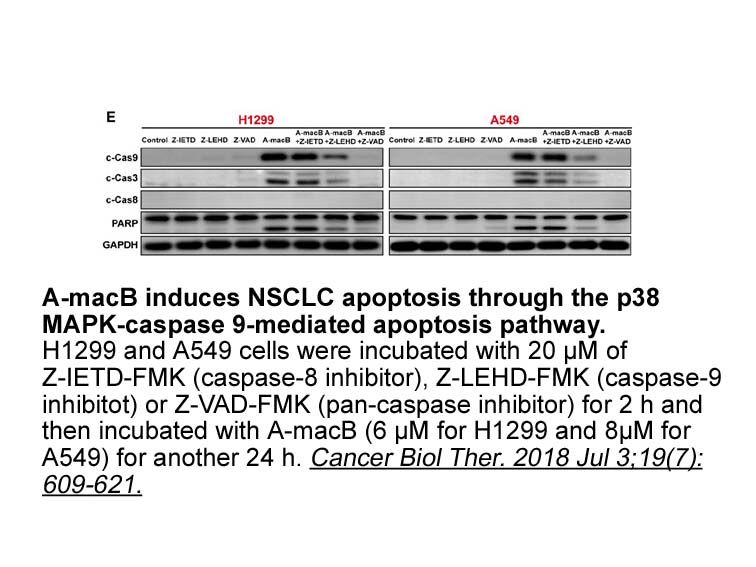
GPR40, which is also known as FFA receptor 1 (FFAR1 or FFA1), was identified as an orphan receptor in the search for novel human galanin receptor (GALR) subtypes in 1997. Using reverse pharmacology approaches measuring calcium transients, GPR40 were deorphanized and characterized as being activated
-
In conclusion a novel series of GPR agonists containing nitr
2022-07-14
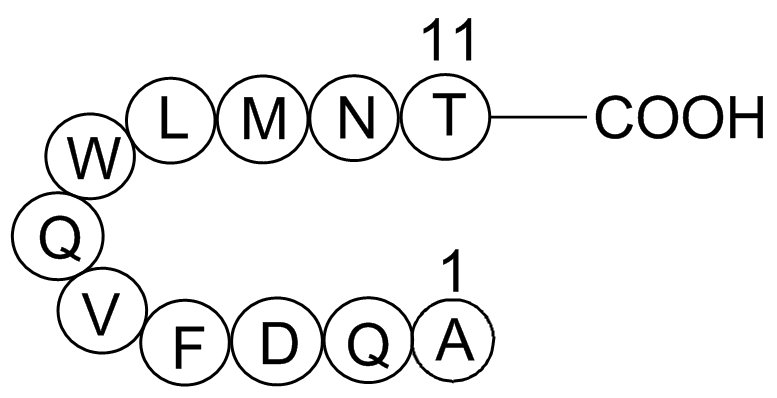
In conclusion, a novel series of GPR40 agonists containing nitrogen heterocyclic rings derived from TAK-875 were designed and synthesized. The structural activity relationship studies indicated that the substituents on the nitrogen gyy had a remarkable effect on the GPR40 agonistic activity. Compou
-
Acknowledgments br Introduction Stress plays a key role in t
2022-07-14

Acknowledgments Introduction Stress plays a key role in the etiology and/or exacerbation of major depressive disorder characterized by loss of energy, feelings of hopelessness and anhedonia [1]. Ample evidence clearly suggests that endocannabinoids (eCBs) participate in stress-associated neuron
-
Enhancer of Zeste Homolog EZH is a core component of
2022-07-14

Enhancer of Zeste Homolog 2 (EZH2) is a core component of the Polycomb Repressive Complex2 (PRC2) which also includes SUZ12 and EED. PRC2 represses gene transcription through trimethylation of Lys27 of histone H3 (H3K27), and contribute to the maintenance of cell identity, SB 204070 regulation and o
-
An interference of fluorescence derived from biological samp
2022-07-14
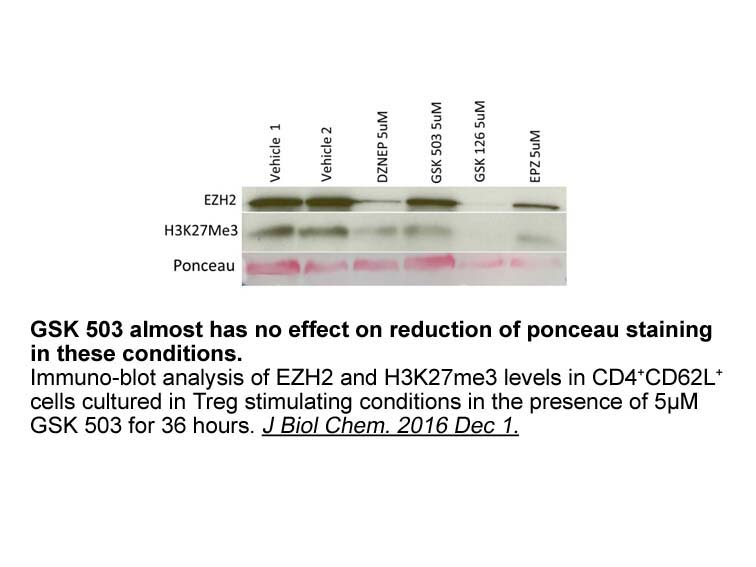
An interference of fluorescence derived from biological samples is also an important CMX001 to be addressed in the fluorescent analysis for biological samples. Advanced glycation endproducts (AGEs) are representative endogenous fluorescent substances that are widely distributed in various organs as
16042 records 400/1070 page Previous Next First page 上5页 396397398399400 下5页 Last page